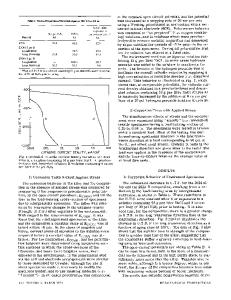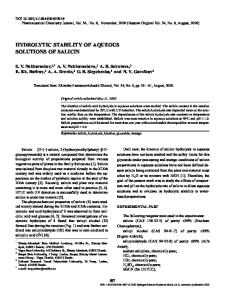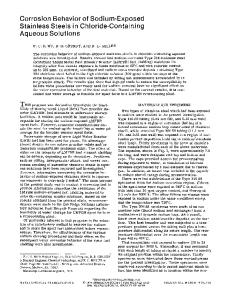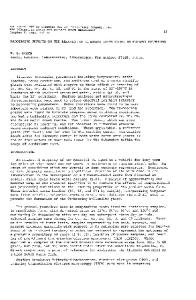Review of Hydrolysis Behavior of Ions in Aqueous Solutions
- PDF / 645,657 Bytes
- 12 Pages / 420.48 x 639 pts Page_size
- 32 Downloads / 798 Views
REVIEW OF HYDROLYSIS BEHAVIOR OF IONS IN AQUEOUS SOLUTIONS* R. E. MESMER AND C. F. BAES, JR. Chemistry Division, Oak Ridge National Laboratory, Oak Ridge, TN 37831
ABSTRACT The word "hydrolysis," literally "water splitting," refers here to those reactions of metallic ions with water that liberate protons and produce hydroxy or oxy complexes in solution and precipitate hydroxide or oxide solids. Over the wide range of pH available in water, the strong tendency of hydroxide to bond to and bridge among cations leads to a multitude of species for many of the metals. Properties of the metal ion such as "hardness" and, especially, charge and size, determine the strength of these interactions and the species formed by each. Over 200 mononuclear species have been identified that predominate in dilute solutions across the pH scale. It is the stability of these species that largely determines the pH dependence of the solubility of the oxide or hydroxide solid formed. Both the tendency of the variety of polynuclear species (those containing more than one metal ion) to form and the solubility of the hydrolytic solid correlate with the stability of the first mononuclear species. Other correlations allow one to predict the enthalpy and entropy of a variety of hydrolysis reactions, and therefore the dependence of the stability of hydrolysis products on temperature.
INTRODUCTION In this paper we will review the hydrolysis behavior of the ions drawing principally on two sources: the book Hydrolysis of Cations [1] and our review article on the thermodynamics of hydrolysis reactions [2]. The word "hydrolysis" is used here to represent reactions of ions, especially metal ions, in which the water molecule is split causing the liberation of protons and the formation of hydroxy or oxy complexes in solution. When saturation is reached the precipitation of a hydroxide or mixed hydroxide-oxide solid occurs. These reactions are common to most cations because of the wide range of hydroxide concentrations accessible in water (< 10-14 m to > 1 m) as a 0 result of the small dissociation constant of water (_ 10-14 at 25 C). Because of the tendency of the hydroxide and oxide to act as bridging ligands with M.(OH),(xzcertain metal ions, often several polynuclear species form, i.e., Y)+ where x is greater than one. These species can form in the presence of several mononuclear species of the type, M(OH)y(z-Y)+. Hydrolysis reactions are important in chemistry because they determine such behavior as: (1) the solubility of the metal ion (in the absence of other ligands), (2) the species actually present in solution and therefore the interactions with other complexing ligands or with solids, (3) the tendency for coagulation of colloids and other surface phenomena, (4) the oxidizability or reducibility of the metal to other valence states, (5) the transport and deposition of the metal in natural systems and technological applications, and (6) the toxicity of the element to organisms. The general reaction in solution is xM(H
2 0)aZ+
+ (y+b-ax)H 2 0 = M
Data Loading...











